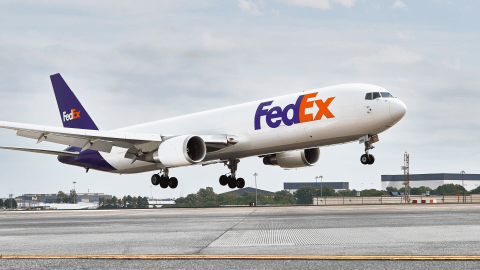Fedex Stock Fair Value at $237: Morningstar Research Maintains HOLD Ratings
In its latest equity analyst report, Morningstar maintains a “Hold” (fairly valued) recommendation on FedEx Corp (NYSE: FDX), reflecting a nuanced view of the company’s current valuation, operational strengths, and near-term risks. The research underscores FedEx’s entrenched market position, ongoing cost optimization, and the evolving landscape of global logistics. However, it also highlights elevated macroeconomic uncertainty, competitive threats, and sector-specific headwinds. Investors should pay close attention to the outlined price levels, margin forecasts, and strategic pivots as they calibrate their positions in this iconic US logistics stock.
FedEx’s Market Position and Research House View
Morningstar’s current stance is “Hold,” with the stock trading at $238.71 as of July 8, 2025, essentially in line with its fair value estimate of $237.00. The price/fair value ratio stands at 1.01, indicating the stock is fairly valued at present levels. Investors are advised to watch for significant price movements away from this equilibrium for potential entry or exit points.
Key Levels for Investors:
1-Star (Overvalued) Price: $367.35
5-Star (Undervalued) Price: $142.20
Current Market Price: $238.71
Fair Value Estimate: $237.00
Morningstar’s methodology is rooted in discounted cash flow (DCF) analysis, integrating scenario analysis and competitive advantage assessment. The “Hold” call reflects high uncertainty around near-term forecasts but acknowledges FedEx’s long-term operational resilience.
Business Model and Competitive Dynamics
FedEx is a global logistics powerhouse, pioneering overnight delivery and operating the world’s largest express package network. Its Federal Express segment accounts for 86% of revenue, with the remainder from less-than-truckload (LTL) freight and ancillary services.
Competitive Landscape:
FedEx, UPS, and DHL dominate global parcel shipping, with formidable barriers to entry due to network scale, capital intensity, and regulatory complexity.
Amazon’s insourcing of last-mile delivery is a rising competitive threat, but its national linehaul capacity remains limited, and peak season constraints hinder broader market entry.
Moat Assessment:
FedEx is assigned a “narrow” economic moat, reflecting sustainable but not unassailable competitive advantages. The company is expected to outearn its cost of capital by a slim margin over the next decade, absent irrational competitive behavior from Amazon or others.
Recent Performance and Financial Highlights
Revenue and Margin Trends:
Fiscal 2025 revenue was roughly flat at $87.9 billion, with B2C package volumes recovering but B2B and LTL segments facing persistent weakness.
Adjusted operating margin improved to 7.0% in fiscal 2025, supported by aggressive cost rationalization under the “Drive” program.
The Federal Express segment’s margin rose to 7.1%, while LTL margin deteriorated to 16.7% amid soft industrial demand.
Profitability and Cash Flow:
Adjusted EPS for 2025 came in at $18.23, with free cash flow to the firm at $3.1 billion.
Dividend per share increased to $5.52, with a payout ratio of 30.3%.
Return on equity (ROE) was 14.6%, and return on invested capital (ROIC) was 8.6% for the year.
Strategic Initiatives and Structural Changes
Operational Efficiency:
FedEx consolidated its ground and express operations into the new Federal Express division, aiming for network optimization and capacity rationalization.
The company achieved targeted structural cost savings of $2.2 billion in fiscal 2025.
Upcoming Spinoff:
Management intends to spin off FedEx Freight as a standalone public entity by June 2026, seeking to unlock shareholder value and enable greater strategic focus for both businesses.
Risk Factors and Uncertainty
Macroeconomic Headwinds:
US tariff actions and global economic uncertainty pose significant risks to both consumer (B2C) and industrial (B2B) demand.
The company’s high uncertainty rating reflects exposure to cyclical end markets and sensitivity to trade policy and inflation.
Labor and Cost Pressures:
Wage inflation and the risk of broader unionization—particularly in the wake of the TNT acquisition—could impact cost flexibility.
FedEx continues to mitigate fuel price volatility with surcharges, though timing lags persist.
Outlook and Guidance
Fiscal 2026 Forecasts:
Revenue is projected to be flat to slightly higher, with Federal Express margins inching up to 7.2% and LTL margins expected to decline modestly.
Consolidated adjusted operating margin is forecast at 6.6%, with more pronounced recovery anticipated in fiscal 2027 as industrial demand rebounds.
Long-Term Projections:
By 2027, revenue growth is expected to accelerate to 4.0%-4.5%, and consolidated margins are forecast to rise to 7.2%.
The DCF model bakes in a midcycle EBIT margin near 7.3% and continued improvement in free cash flow and shareholder returns.
Peer Comparison and Valuation Metrics
How FedEx Stacks Up:
Market Cap: $56.88 billion
Price/Earnings: 13.12x
Dividend Yield: 2.34%
Price/Sales: 0.66x
Price/Book: 2.04x
Key Peers:
UPS: Larger market cap, higher dividend yield, “wide” moat, but currently trading below fair value.
Deutsche Post DHL: European leader, “narrow” moat, similar valuation metrics.
Old Dominion Freight Line: Higher growth, “narrow” moat, but currently overvalued.
Actionable Takeaways for Investors
Investment Levels and Strategy:
FedEx is considered fairly valued at current levels. Investors seeking value should monitor for a pullback toward the 5-star price ($142.20) for a more attractive entry.
Upside catalysts include successful execution of cost initiatives, recovery in industrial end markets, and value creation from the Freight spinoff.
Downside risks stem from macroeconomic shocks, competitive incursions, and cost inflation.
Suggested Action:
Hold existing positions; consider accumulating on significant weakness below $180.
Reassess if the stock approaches the 1-star price ($367.35), at which point it would be considered overvalued.
